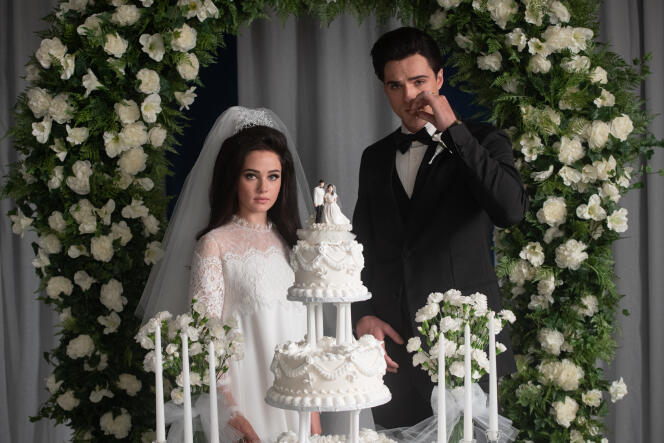


LE MONDE'S OPINION - NOT TO BE MISSED
It's the story of a teenage girl growing up in an extraordinary world. When 14-year-old Priscilla met Elvis Presley, 10 years her senior, she was bored stiff on a German Air Force base, where her father and the singer were working. As a young virgin, she is guided by friends of the star to the altar of "Love Me Tender." The schoolgirl vaguely resembles the daughter of the Austrian emperor portrayed by Sofia Coppola in 2006 (Marie Antoinette).
Less decadent than the misunderstood archduchess married off to Louis XVI, Priscilla (Cailee Spaeny, awarded Best Actress at the Venice Film Festival) at one point imagines she has hit the jackpot – true love, luxury, fantasy – only to be engulfed by the life of the King (Jacob Elordi), who proves quite incapable of consummating their marriage. The film begins with images that serve as a guide: she presses her small feet, with delicately polished toenails, into plush carpeting. She attaches a row of false eyelashes at the edge of her eyelid. In her mirror, an Elvis record peaks into the reflection... An opening that foreshadows the metamorphosis of a young woman who, over the next 10 years, will conform to what her famous husband expects of her.
A variation on adolescence (following Virgin Suicides, Lost in Translation, Marie-Antoinette, Somewhere, The Bling Ring, The Beguiled – essentially the director's entire body of work), the film also explores consumer society, housewives, husbands, the sixties, rock'n'roll, drugs, and, through the illusion of the good life, narrates the haunting fear of loneliness and boredom.
Few filmmakers give the impression of capturing a mood, a sentiment, or a state of mind on the surface of things like Coppola does here. Embracing random chronology, a succession of low-key moments, the subtle melody of daily life, and the omission of the artist's major successes, she immerses us in the private life of the couple, based on Priscilla Presley's memoir, Elvis and Me, published in the US in 1985. Countless bedroom scenes, enhanced by the shadows skillfully crafted by French cinematographer Philippe Le Sourd, depict the lovers, despite their genuine complicity, sliding towards disaster – starting with the pills freely given to Priscilla to induce sleep, turning her into a Sleeping Beauty for two whole days.
Beyond the meticulous and splendid reconstruction of Graceland (before Elvis renovated it in 1970, as it can be visited today), the house serves as a showcase, displaying a selection of carefully chosen objects in the form of a glamorous array, among which Priscilla wanders. Nothing is wrinkled; it's soft, shiny, and everything is perfectly arranged. Coppola exhibits a certain taste for accessories in her cinema, filled with inserts on jewelry, handbags, shoes, creating the illusion of happiness within reach. Priscilla seems to live in a dollhouse where she has become the main protagonist, waiting to be moved, called, entertained – a puppy, a car, a gun matching her outfit – directed, dressed...
You have 25% of this article left to read. The rest is for subscribers only.
